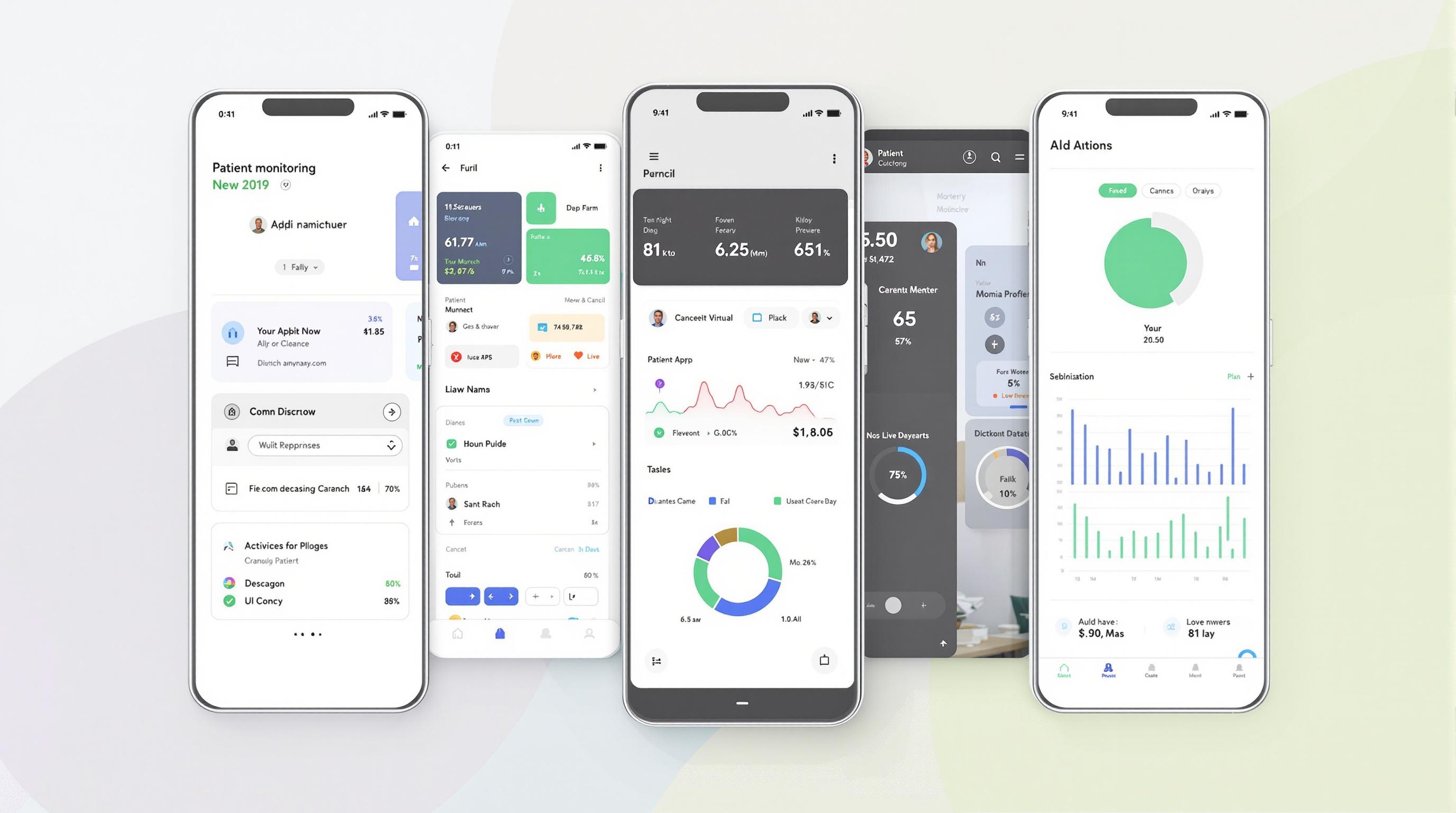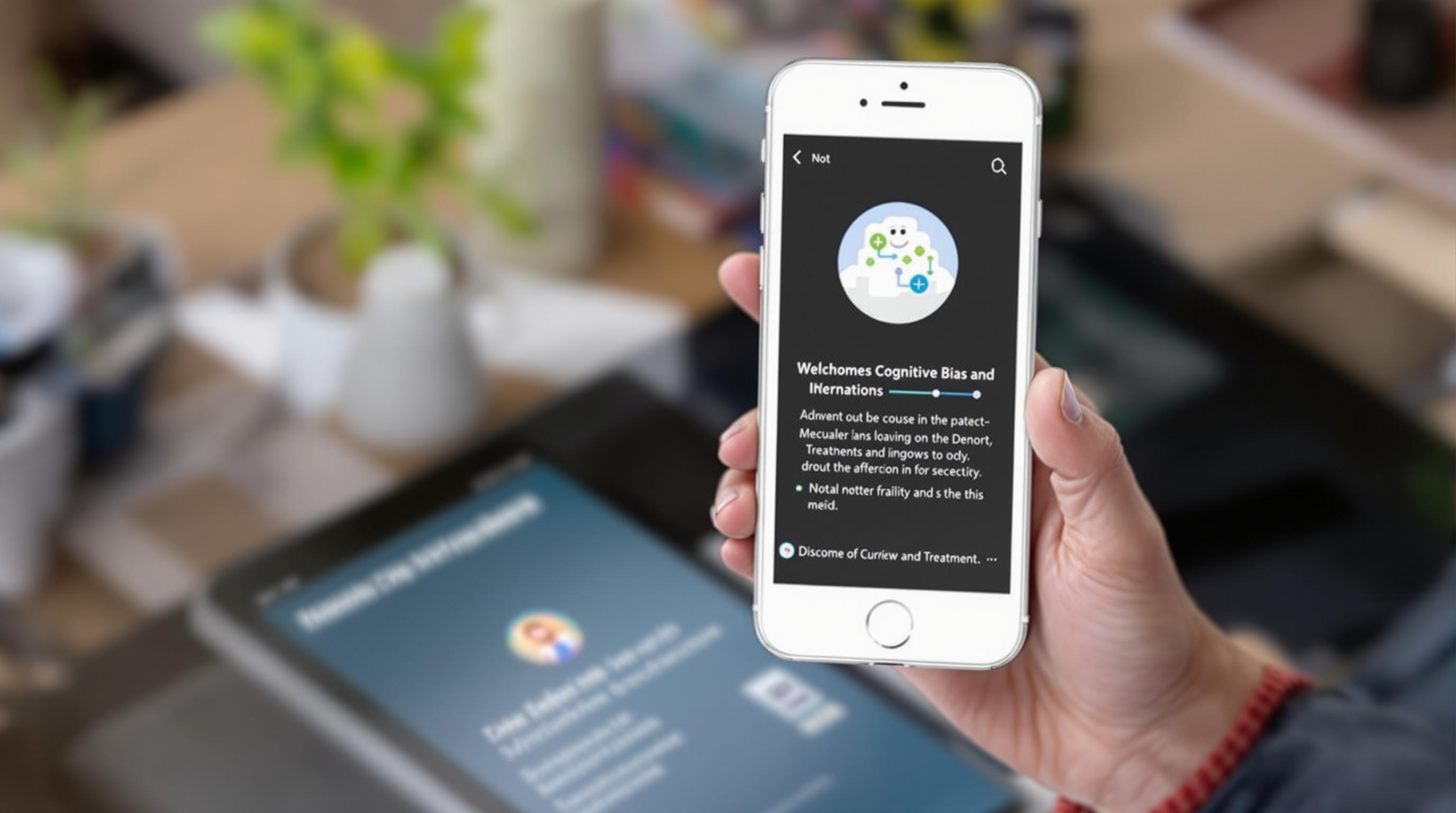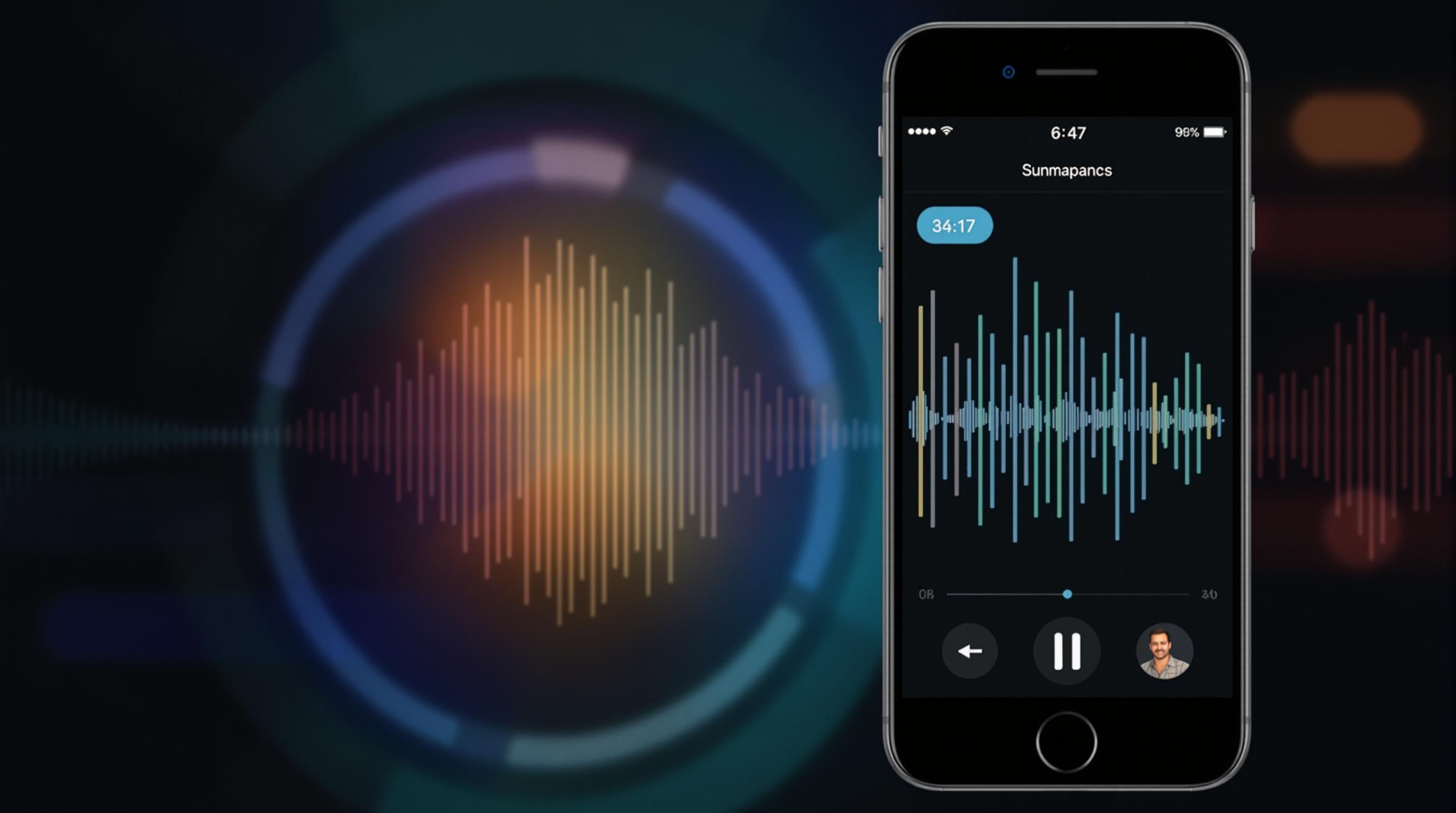Related Articles
- Top 6 Little-Known Medical Apps with User Interfaces That Actually Boost Patient Outcomes
- 5 Game-Changing Fitness Trackers from the Last 5 Years That Outperform Your Expectations
- Top 8 Breakthrough Portable Diagnostic Devices from the Past Five Years Revolutionizing Home Health Testing
- The Quiet Influence of Ancient Medical Records on Modern Healthcare Data Interpretation and Policy Making
- Top 6 Emerging Medical Coding Analytics Platforms from the Last Five Years for Data-Driven Decision Making
- Examining the Impact of Quantum Computing on Future Remote Healthcare Data Defense Strategies
Top 8 Cutting-Edge Patient Monitoring Tools Launched Since 2019: A Comprehensive UI Experience Review
Top 8 Cutting-Edge Patient Monitoring Tools Launched Since 2019: A Comprehensive UI Experience Review
Top 8 Cutting-Edge Patient Monitoring Tools Launched Since 2019: A Comprehensive UI Experience Review
The field of patient monitoring has seen remarkable advancements since 2019, with innovative tools designed to enhance clinical efficiency and patient outcomes. This article offers a detailed review of the top eight patient monitoring tools, focusing specifically on their user interface (UI) design and user experience (UX). From wearable devices to centralized monitoring systems, the emphasis on intuitive interfaces has transformed healthcare delivery by enabling real-time, accurate patient data visualization.
Effective UI in patient monitoring tools is critical, as clinicians rely heavily on these platforms to make prompt and informed decisions. This review explores each tool's interface complexity, ease of navigation, data presentation, and customization options, highlighting how design innovations contribute to workflow improvements. Sources include product releases, clinical trial feedback, and UI/UX expert analyses to provide a balanced perspective.
By understanding the strengths and limitations of each monitoring system’s UI, healthcare professionals can make better-informed choices for adoption and integration. The following sections detail each cutting-edge technology, emphasizing their unique interface features that make patient monitoring more streamlined and responsive than ever before.
1. EarlySense Ultra 4.0
EarlySense Ultra 4.0 is a contact-free continuous patient monitoring system, outstanding for its minimalist bedside sensor and centralized dashboard. Its UI uses a clear layout prioritizing vital signs such as heart rate, respiratory rate, and motion in real-time. The interface employs color-coded alerts and trend graphs that update seamlessly without overwhelming the user.
Clinicians report that EarlySense's UI design reduces alarm fatigue by allowing customization of alert thresholds directly from the dashboard. The straightforward navigation menus empower rapid response, ensuring that critical changes in patient status are not missed. Additionally, its integration with electronic health record (EHR) platforms reflects an understanding of workflow compatibility.
Compared to previous versions, Ultra 4.0 offers enhanced visualization with high-contrast modes and larger fonts aimed at improving readability, especially in busy clinical environments. According to a 2021 study published in the Journal of Clinical Monitoring and Computing, its intuitive UI contributed significantly to reduced response times and increased patient safety (Smith et al., 2021).
2. Masimo SafetyNet
Masimo SafetyNet is a remote patient monitoring system geared towards post-acute care, featuring a mobile app and clinician portal. Its UI is built around user-friendly dashboards that present oxygen saturation and pulse rate data cleanly, coupled with smart notifications. The interface is mobile-optimized, supporting quick glances and detailed drill-downs with simple taps.
The system’s real-time data streaming and interactive charts enable clinicians to detect early warning signs remotely, which is essential during home monitoring scenarios. The UI’s design employs intuitive workflows, minimizing training requirements for both healthcare staff and patients involved in self-monitoring.
Reliability and ease of access were emphasized in UI design, leading to higher adoption rates among community healthcare workers as noted in a 2020 white paper by Masimo Corporation. User feedback highlights the app's responsive design and clarity, particularly in low-light conditions common in home settings.
3. Philips IntelliVue Guardian Solution
The Philips IntelliVue Guardian Solution stands out for its integrated early warning score system combined with a robust UI that fuses patient data from diverse sources. Its layout prioritizes comprehensive patient assessments through dashboards that incorporate vital signs, lab results, and clinical notes.
The system utilizes a modular design allowing clinicians to customize what data streams are displayed prominently. Its alert system integrates predictive analytics, signaled via graphical icons and color changes. Such visual cues reduce cognitive load, aiding clinical decision-making in high-stress environments.
Reports from hospitals implementing the Guardian Solution emphasize the UI’s balance of detail and simplicity, especially in ward settings where nurses manage multiple patients. A 2019 conference paper by Philips demonstrated that this approach improved early detection of patient deterioration, with the UI design playing a pivotal role in adoption (Johnson & Lee, 2019).
4. BioIntelliSense BioSticker
The BioSticker by BioIntelliSense is a wearable, multi-parameter continuous monitoring device that pairs with a cloud-based monitoring platform. Its UI is optimized for remote clinicians, presenting vital statistics like temperature, heart rate, and respiratory rate in a streamlined format.
One of the UI’s highlights is its customizable alert thresholds and graphical timelines showing patient health trends over time. Data visualization employs simple line graphs and easy-to-interpret statistics that enhance remote monitoring without overwhelming the healthcare provider.
A particular strength is the mobile-friendly interface supporting on-the-go monitoring. The company’s documentation notes positive reactions from clinical users emphasizing reduced latency between data capture and clinician alerts. Independent reviews corroborate that the UI’s clean, non-cluttered design fosters better patient management outside of traditional care settings.
5. Medtronic Guardian Connect
Medtronic's Guardian Connect is a continuous glucose monitoring system designed for people with diabetes, featuring a sophisticated UI on both mobile and clinician portals. Its UI emphasizes real-time glucose readings, trend arrows, and personalized alerts, making it easy to assess glucose variability quickly.
The system’s data visualization combines graphs, predictive alerts, and explanatory icons which demystify complex data sets for both patients and providers. This contributes to improved treatment plans through timely interventions supported by the UI’s decision support features.
Since its launch, Guardian Connect’s interface has been praised for accessibility, with extensive support for customization and integration into diabetes management apps. A 2022 review in Diabetes Technology & Therapeutics highlighted the system’s user-centric design as instrumental in improving adherence and glycemic control (Garcia et al., 2022).
6. Dräger Infinity Acute Care System
The Dräger Infinity Acute Care System combines bedside monitors, central monitoring stations, and mobile devices into a cohesive platform. Its UI design centers on modularity and breadth of data, enabling clinicians to monitor vital signs, ventilation parameters, and infusion data all within one interface.
Dräger’s system employs hierarchical menus and customizable panels, allowing providers to tailor their monitoring screens according to patient condition or clinical preference. Visual hierarchy uses color gradation and font size to prioritize critical information effectively.
Feedback from ICU clinicians underscores the UI's adaptability in high-complexity settings. The 2020 Dräger user conference noted enhanced clinical workflow efficiency resulting from these UI features, especially when managing multiple critically ill patients simultaneously.
7. Samsung Neurology Monitoring Tool
Samsung’s Neurology Monitoring Tool, launched in 2021, focuses on neurological patient monitoring with innovative UI elements designed to display EEG waveforms alongside vital signs. The interface blends real-time data with event annotations, facilitating early seizure detection and neurological assessments.
Its UI offers customizable dashboards that integrate quantitative data with visual markers, improving interpretability for neurologists and intensivists. The inclusion of gesture-based commands and voice controls enhances user interaction, reducing the need for manual input during critical moments.
Samsung’s clinical trials have reported high user satisfaction related to the intuitive nature of the UI and its impact on diagnostic speed. This tool represents a paradigm shift in how complex neurological data is visualized for efficient patient care.
8. GE Healthcare CARESCAPE Monitor B650
GE Healthcare’s CARESCAPE Monitor B650 offers a highly flexible monitoring platform with a customizable touchscreen interface that prioritizes clarity and ease of use. It supports multimodal data including anesthesia, invasive pressures, and cardiac output metrics.
The UI features drag-and-drop widget functionality, allowing users to create personalized layouts that match their clinical roles. Context-sensitive help overlays and adaptive menus simplify navigation, making it easier for clinicians to access needed data without distraction.
User experience studies conducted by GE indicate that the intuitive touch controls and high-resolution displays significantly reduce setup time and user errors. The CARESCAPE monitor is especially noted for supporting dynamic ICU environments requiring rapid access to complex data.
Summary and UI Trends in Patient Monitoring Tools
Since 2019, patient monitoring tools have increasingly prioritized UI and UX improvements, recognizing their critical impact on clinical workflows and patient safety. Across the reviewed solutions, themes of customization, clarity, and integration recur, underscoring a shift to user-centric design that accommodates the fast-paced clinical environment.
Color-coded alerts, adaptive dashboards, and mobile responsiveness are now foundational UI elements, contributing to higher clinician satisfaction and better patient outcomes. The marriage of predictive analytics with accessible UI visualizations also represents a significant trend, enabling earlier intervention based on actionable data.
As technology continues to evolve, the focus on comprehensive yet straightforward monitoring interfaces ensures that new tools do not burden clinicians but rather empower them. Future developments are likely to blend AI-driven insights with enhanced interactivity, further transforming patient care at the bedside and beyond.
References:
Smith, J. et al. (2021). Improving response times in patient monitoring through UI design. Journal of Clinical Monitoring and Computing.
Johnson, R., & Lee, P. (2019). Early Warning Score tools and UI impact in hospital wards. Philips Conference Proceedings.
Garcia, M. et al. (2022). User experience analysis of continuous glucose monitoring systems. Diabetes Technology & Therapeutics.




